Clancy Tucker's Blog, page 169
November 17, 2017
18 November 2017 - PATRICK PARKER - GUEST AUTHOR
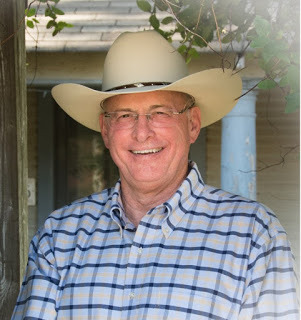
PATRICK PARKER - GUEST AUTHOR -
G'day folks,
Today I interview a charming author from Texas.
Welcome, Patrick ...
1. TELL US A LITTLE ABOUT YOURSELF.
I grew up in a small town, near Tulsa, Oklahoma. I earned a bachelor’s degree in management and a master’s degree in international relations. I had a successful career in the US Army and spent six years in Europe—five years in Italy and one year in Germany. After retiring from the military, I worked an additional fifteen years in the defense industry. Now retired again, I am writing fulltime. I enjoy scuba diving, sailing, going to the beach and gun range. I currently live in Texas.
My three books to date are, Six Minutes Early, War Merchant, and Treasures of the Fourth Reich. Currently, I’m working on my fourth book and hope to have it finished soon. All of my books are available on Amazon.com.
2. HOW DID YOU BECOME A WRITER?
It was because of a challenge. I was traveling a lot and I would usually pick up a book to read on the plane. After two books in a row, I complained to my wife how poorly the books were written with various errors. They were published by big name, traditional publishing houses. When I said I could write a better book, she said, “Well do it.” I wrote Treasures of the Fourth Reich. I had fun writing it and achieved my goal.
With the success of my first book, I decided to write War Merchant. It turned out great and next I wrote Six Minutes Early. All three have received four and five star reviews.
3. WHAT TYPE OF PREPARATION DO YOU DO FOR A MANUSCRIPT? DO YOU PLAN EVERYTHING FIRST OR JUST SHOOT FROM THE HIP?
The first thing is the idea. If it is something I’m interested in enough to work on for the time it takes to write a book, usually a year or so, I will go on to the next step. I proceed to explore it and then come up with an ending. With the idea (situation) and ending, I then work backwards to get a rough idea of how to get to the end. What must happen, what type of characters are needed to get to the ending. Everything along the way must be believable. Usually, I take something from history, something that really happened and go from there. For example, in Treasures of the Fourth Reich, that story was based on the true Nazi looting of Europe and what could have happened forty-five to fifty years later. The book I’m writing now is about what could have happened during the 2016 presidential election and the attempted coup d’état in Turkey.
I don’t really plan everything out but capture the points that will get to the end. Usually, the characters take control and write the story. I just get out of the way.I have tried to plan everything out but it just doesn’t work for me, or the characters. Many times when I’m out on my morning walk, a character will grab on to me and tell me what is going to happen.
I do research before and while I’m writing. It could be about a character, place, or event. I try to write so that the reader is constantly asking, “What is real and what is fiction?”
4. WHAT DO YOU ENJOY MOST ABOUT BEING A WRITER?
When someone says, “Wow! That was good. I couldn’t put it down.” When someone buys a book, they are committed to spending time with the author. I want their time well spent. They expect suspense, realism, and to be entertained. When they tell me I gave them what they wanted, that is it. I’m satisfied!
5. WHAT IS THE HARDEST THING ABOUT BEING A WRITER?
I think it is not getting distracted and having confidence in yourself. Some people will want to shoot you down for any number of reasons. If you believe in yourself and don’t give up, you will succeed. One other thing, you must get out of the way of the characters!
6. WHAT WERE YOU IN A PAST LIFE, BEFORE YOU BECAME A WRITER?
As I mentioned in the first question, I was a career US Army officer and then worked in the defense industry. I travelled around the world and met many interesting people. I draw on those experiences for my writing to come up with great characters in intriguing locations, and suspenseful stories.
7. WHAT IS YOUR GREATEST WRITING ACHIEVEMENT?
I would have to say that it is getting three very good books published. The greatest is yet to come. I do, however, think that each successive book is better than the one before it. That’s the way it should be.
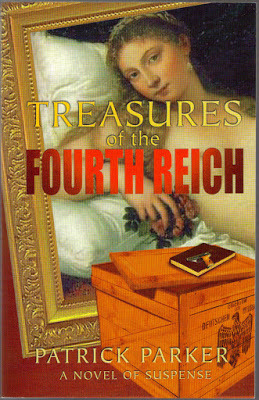
8. WHAT ARE YOU WORKING ON AT THE MOMENT? WHAT GENRE DO YOU WRITE?
I write fast-paced suspense thrillers. They’re fun and exciting.
I’m working on a suspense book that has actually turned out to be a sequel to Six Minutes Early. I didn’t originally plan it that way, the characters did it. At the height of the 2016 presidential election, an attempted coup d’état happened in Turkey. Chaos and turmoil was the norm in the US. The election was full of corruption, dirty tricks and shenanigans. Internationally the US and lame duck president were not respected. So, I took the situation and came up with the idea.
The story is full of suspense, corrupt politicians, murder, treason, terrorists, and all the other makings of a great story. Keep watching for it.
9. WHAT INSPIRES YOU?
A lot of things. People, events, and history. Usually, something happens and that has a relationship to something else. I take a “what if” approach. That gets me going.
10. DO YOU HAVE ANY TIPS FOR NEW WRITERS?
Yes, keep writing and learn from your mistakes. Join a good writers group—one that takes writing seriously and will give honest and specific feedback. Don’t give up.
11. DO YOU SUFFER FROM WRITER’S BLOCK?
Not really. If I’m stuck, I go for a walk. My head clears and ideas flow in. I just open the door and the characters join me. I generally walk about 3.5 miles each morning. I do it for health and to keep my mind clear.
12. DO YOU HAVE A PREFERRED WRITING SCHEDULE?
I prefer to write in the morning. Usually, I write five days a week. My mind is fresh and I’m ready to go. I can’t really write at the end of the day or when I’m tired.
13. DO YOU HAVE A FAVOURITE WRITING PLACE?
Yes, I have my desk in the front of the house by a big window. I can turn on the music and escape into my writing world.
14. WHAT IS YOUR GREATEST JOY IN WRITING?
I guess knowing that I have produced a quality product. I get lots of feedback on how much readers enjoy my books. I keep them on the edge of their seat and trying to guess what is going to happen next. They enjoy the ride.
I work diligently in trying to get the details right and making it as believable as possible. My writers group keeps telling me that they will miss me when I am carted off and placed in the Witness Protection Program. Some of the story lines are that real.

15. WHO IS YOUR FAVOURITE AUTHOR AND WHY?
I was inspired by several authors. Ken Follett, Robert Ludlum, John le Carré, and of course, Tom Clancy. The most favourite is a difficult decision. They are all great suspense storytellers. I like their style and their topics.
16. WHAT’S THE GREATEST COMPLIMENT YOU EVER RECEIVED FROM A READER?
When someone tells me, they couldn’t put it down and stayed up late at night on the edge of their seat. I get a lot of great compliments from my readers. When they are happy, I’m happy. The readers are the ones that count.
17. WHAT WAS THE WORST COMMENT FROM A READER?
I think it was by one reader that read, Treasures of the Fourth Reich. She commented that she felt it would have been better if it were just about one piece of art. I wasn’t sure what she was thinking. The title is Treasures—plural. In the description it says, … the hunt for Europe's lost art falls to a husband and wife team who become entangled in this web of stolen treasures. Dix and Maria Connor face down a secret and deadly network trafficking in Titians, Bruegels and remnants of Peter the Great's magnificent Amber Room. Plural.
So, I don’t know what she expected.
18. WRITERS ARE SOMETIMES INFLUENCED BY THINGS THAT HAPPEN IN THEIR OWN LIVES. ARE YOU?
Yes. I draw from my military and corporate experience. I know most about those things. I am also fascinated by current events—political and international. An author just can’t make up some of these things.
19. OTHER THAN WRITING, WHAT ELSE DO YOU LOVE?
My family, of course. Having fun, travel, the beach, and those things I mentioned previously. Best described as life.
20. DID YOU HAVE YOUR BOOK / BOOKS PROFESSIONALLY EDITED BEFORE PUBLICATION?
Yes. That’s part of the process. I will write a chapter, then my wife will read it and make suggestions. I re-write it and then take it to my writers group. They read it and critique it with suggestions. I make the corrections and when the entire manuscript is finished, I send it to a beta reader I trust. He makes his suggestions and then I work on those. After all of this is completed, several sharp and critical eyes have seen it. Then I’m ready to send it to an editor. The editor gets a very good manuscript, which usually goes through two rounds of editing.
21. DESCRIBE YOUR PERFECT DAY
My idea of a “perfect day” is going for a walk, then having coffee while doing some marketing, then breakfast, and a shower. I write uninterrupted until lunch. After lunch, back to uninterrupted writing until about five or six in the evening. However, I’m still striving for this “perfect day.” Something always happens during the day that keeps me from it. There are phone calls, unexpected events, haircuts, mowing the grass, running an errand, and etcetera. I am a normal person with a normal life. I don’t think there is a perfect day. Some days tend to be better than others. At least I have my vision of a perfect day.
22. IF YOU WERE STUCK ON A DESERT ISLAND WITH ONE PERSON, WHO WOULD IT BE? WHY?
Well, most guys, I think, would probably say someone like Sophia Loren, Nicole Kidman, or Cate Blanchett. However, that could have different problems. I, on the other hand, would want to be stranded with someone like Dydre Rowyn, my protagonist in War Merchant or even Max Kenworth, the protagonist in Six Minutes Early. Both are resourceful, smart, cunning, and deadly. These skills would be a necessity for survival, if one were stuck on a desert island. Especially, if faced with marauding natives or bad guys. It might be nice to have the company of an attractive female companion, so Dydre would be a good choice. However, my wife might get jealous or Dydre might begin to think of me as a loose end, and get rid of me. That leaves Max. However, Dydre is a woman and better looking. That is a very tough question. A lot of things to consider. How long would I be on the island? Does it have internet? Perhaps I shouldn’t be stuck on a desert island.
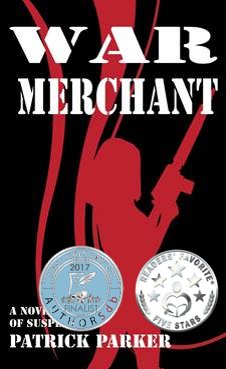
23. WHAT WOULD YOU SAY IF YOU HAD THE CHANCE TO SPEAK TO WORLD LEADERS?
How much time do I have for an answer? Stop the corruption, petty bickering, and quest for dominance. We all live on earth and we all came into this world the same way. No one person is any better than the next. Everyone wants to live in peace. Accept the fact that there are cultural and religious differences. No culture or religion is any better or worse than the other.
24. WHAT ARE YOUR PLANS FOR THE FUTURE?
Finish the book I’m working on and publish it. Start a new book. Probably should squeeze in a vacation or two in there.
25. WHAT ARE YOUR VIEWS ON BOOK TRAILERS? DO THEY SELL BOOKS?
I haven’t decided yet. If someone is looking to buy a book and isn’t familiar with the author or the book, they may not take the time to watch the trailer. I think the reviews by other readers are more important. If the cover of the book, description, and review are good, the buyer may not bother with a trailer. Then if they do watch the trailer and it’s not good, you could lose a sale. I think most buyers look at the description, the reviews, and possibly the cover (of an unknown book or author) then make a decision.
26. DO YOU SEE YOURSELF IN ANY OF YOUR CHARACTERS?
Yes, I think most authors do that. Maybe not the entire character but portions, traits, habits, or features. I think that’s common.
27. DOES THE PUBLISHING INDUSTRY FRUSTRATE YOU?
Yes, somewhat. However, I do think it is improving. Amazon has caused a lot of changes for the better. Self-publishing has come into prominence. In the past, it was very difficult to get published, through a traditional publisher, as a new author. The process was very lengthy, usually taking a couple of years, or more, to get a book published. It was frustrating with a lot of ups and downs along the way.
Although Amazon has streamlined the process and made it easier to be published, they still have standards. They will de-list a title if it is full of errors and continuously gets bad reviews. That’s a good thing. I like how the readers’ reviews are published on the book pages for a buyer to see what others thought of a book.
I am not familiar with the other self-publishing sites but hope they are following Amazon’s lead in providing services and maintaining quality standards. Many good authors are switching to self-publishing which is having an impact on the traditional publishers. A lot of great books are self-published.
My biggest frustration with a self-published title is that the big chain stores are very reluctant to stock a self-published book. It boils down to economics. If a title doesn’t sell, they can’t return the books. However, they will list them on their webpage.
28. DID YOU EVER THINK OF QUITTING?
No, I’m not a quitter. When I decide to write a book, I finish it. It is a lot of work and takes time. It makes it all worthwhile when my readers tell me they liked one of my books.
29. WHAT WAS YOUR FAVOURITE MANUSCRIPT TO WRITE? WHY?
Hmmm. Good question. That’s like asking a parent which child he or she likes the best. Each child is different and you love them. Manuscripts are the same—they are different and you love them all. Each of my books tell a different story.
War Merchant was a lot of fun to write and it had a few challenges. It has a female, kick-ass protagonist. I wrote it with a woman’s perspective. A lot of women have read it and loved it.
Six Minutes Early is a story that could happen.
Treasures of the Fourth Reich, although fiction, is based on true events that happened at the end of WWII.
30. HOW WOULD YOU DEFINE ‘SUCCESS’ AS A WRITER?
Consistently writing well-written books. If a reader says, “That’s a good author. He/she writes a very good book.” The reader is the one that counts.
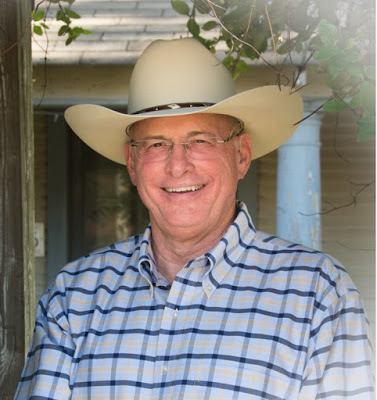
31. WHAT SHOULD READERS WALK AWAY FROM YOUR BOOKS KNOWING? HOW SHOULD THEY FEEL?
They should feel satisfied that their time was well spent. I want a reader to ask, “What was real and what was fiction?” My goal is to entertain them. I want the reader to walk away knowing that I write a good book and that I have worked hard to eliminate errors. The next time they buy one of my books, they know it will be a great ride!
32. WOULD YOU LIKE TO HAVE YOUR BOOKS MADE INTO MOVIES? EVER WRITTEN A SCREENPLAY?
Yes, I would like to have my books made into movies. That would be fun. I hope I could be part of the process in making the book come to life on the screen.
No, I have not written a screenplay.
33. HOW MUCH THOUGHT GOES INTO DESIGNING A BOOK COVER?
A lot. I want the cover to capture the essence of the story, look good, and be eye-catching. I want the designer to come up with the idea from the story. I want them to design what the story said to them. I discuss the different samples with the designer—pros and cons. I make the final decision. I do get input from my writers group and others. It is always a tough decision and I agonized over it for a number of days.
I take into consideration things such as, how well it shows up as a thumbnail on the web, the font, title placement, eye-catching, colors, author’s name placement, readability of the title, cover finish, and things like that.
There are many things to consider and it takes time.
34. WHAT’S YOUR ULTIMATE DREAM?
Have all the books I write made into movies.
35. WRITING IS ONE THING. WHAT ABOUT MARKETING YOU, YOUR BOOKS AND YOUR BRAND? ANY THOUGHTS?
It is a never-ending process and something you must do. Even if you are traditionally published, you still must do it. It is up to you. You must do it daily and through various means. I do suggest that authors be careful in spending their time and money wisely. Beware of those that tell you they can make you rich and famous. Or that their process is unique, the latest thing out. They are just out to get you signed up. You can go broke in a hurry. I think you should take the long-term approach. There is no such thing as get rich and famous quick.
The common thing I have read from well-known and very successful authors is to write good books, and keep writing. If a reader likes your book, they will want to read another and another. Focus long term.
36. ARE YOUR BOOKS SELF-PUBLISHED?
Yes. My first book was traditionally published. As soon as the publisher recouped his money from the advance, he seemed to lose interest. I was doing the work and he was making the money. Many of the things he promised never happened. When my contract was up I self-published that book. I self-published my other two and will probably do the same with the one I’m writing now. I’m doing the work and making the money.
I think this is a common theme with publishers. There are exceptions.
37. DESCRIBE YOURSELF IN FIVE WORDS.
Tenacious, detail-orientated, caring, considerate, dedicated.
38. WHAT PISSES YOU OFF MOST?
A person that is, incompetent, arrogant, condescending, or just won’t try.
39. WHAT IS THE TITLE OF THE LAST BOOK YOU READ? GOOD ONE?
The Spy Who Came In From The Cold by John le Carré. Yes, it was a good one.
40. WHAT WOULD BE THE VERY LAST SENTENCE YOU’D WRITE?
The end.

41. WHAT WOULD MAKE YOU HAPPIER THAN YOU ARE NOW? CARE TO SHARE?
Hmmm. Good one. Can we go back to the desert island?
I’m a pretty happy and content person. I’ve been around the world, lived in Europe, and done a lot of neat things. I would like to go to Australia and possibly the Congo and South Africa. I don’t think it would make me any happier but it would be interesting to see those places.
I’ll just keep writing and hope for a movie. Perhaps one day I will get invited to Australia.
42. ANYTHING YOU’D LIKE TO ADD?
I can’t think of anything else to add. This has been thorough.
Thank you for interviewing me. I hope you have enjoyed it as much as I have. I would love to hear from your readers and get their comments about my books.

BLOG
WEBSITE
AMAZON

Clancy's comment: Thanks, Patrick. Hey, a very good answer to question 23. Mm ... Your answer to question 22 includes two Aussie women. Like your style. Love ya work!
I'm ...
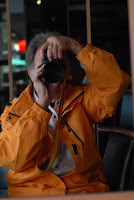

Published on November 17, 2017 12:46
November 16, 2017
17 November 2017 - ORANGE PEELS REVIVE COSTA RICA FOREST
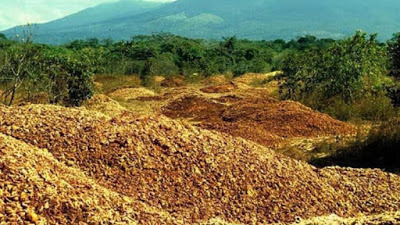
ORANGE PEELS REVIVE COSTA RICA FOREST
G'day folks,
Here is a great story about revival.
20 years ago, a couple of ecologists fighting for the conservation of Costa Rica’s tropical ecosystems convinced a large orange juice producer to donate part of their forestland to a national park in exchange for the right to dispose of massive amounts of orange peels on a degraded plot of land within that same park. No one had any idea what an impact that would have.
In 1997, Daniel Janzen and Winnie Hallwachs, a husband and wife team of ecologists working with the Área de Conservación Guanacaste national park, in Costa Rica, came up with a plan to save a piece of unspoiled, completely forested land from a big fruit juice company, by offering something very attractive in return. If the company, Del Oro, agreed to donate part of its forested land to the Área de Conservación Guanacaste, they would be allowed to deposit massive amounts of waste in the form of orange peels on a 3-hectare piece of degraded land within the national park, at no cost.

Disposing of tons of leftover pulp and peels usually involved burning them or paying to have them dumped at a landfill, so the proposal was very attractive.
Del Oro dumped around 12,000 metric tons of sticky orange waste in the Área de Conservación Guanacaste, but a year after the contract was signed, TicoFruit, another juice company and rival of Del Oro challenged the deal in court, arguing that their competitor was “defiling a national park”. They ended up winning, and the deal between Del Oro and the national park fell through.
For the next 15 years, no one really monitored that 3-hectare piece of land that had been virtually covered with fruit waste. Then, in 2013, while discussing possible research avenues with Timothy Treuer, a scientist at Princeton University’s Department of Ecology and Evolutionary Biology, Daniel Janzen mentioned the orange peel story, and how the land had been visited by other researchers, but not properly evaluated, over the last one and a half decades. Intrigued by Janzen’s idea, Treuer decided to stop by that piece of degraded land that had been covered with fruit waste 15 years earlier. What he found shocked him and his team.
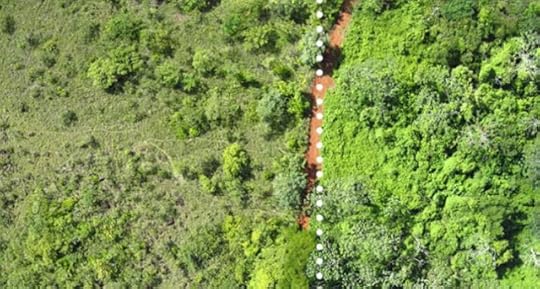
“It was so completely overgrown with trees and vines that I couldn’t even see the 7-foot-long sign with bright yellow lettering marking the site that was only a few feet from the road,” Timothy Treuer recently told Princeton University. “I knew we needed to come up with some really robust metrics to quantify exactly what was happening and to back up this eye-test, which was showing up at this place and realizing visually how stunning the difference was between fertilized and unfertilized areas.”
“The site was more impressive in person than I could’ve imagined,” added Jonathan Choi, who was a senior studying ecology and evolutionary biology at Princeton when he joined Treuer’s research team. “While I would walk over exposed rock and dead grass in the nearby fields, I’d have to climb through undergrowth and cut paths through walls of vines in the orange peel site itself.”
But this visual difference between the 3-hectare orange peel dump site and the surrounding degraded land was not enough to confirm that the fruit waste was responsible for the revival of plant life. Treuer and his team spent months picking up samples, analyzing and comparing them. They found “dramatic differences between the areas covered in orange peels and those that were not. The area fertilized by orange waste had richer soil, more tree biomass, greater tree-species richness and greater forest canopy closure.”
“This is one of the only instances I’ve ever heard of where you can have cost-negative carbon sequestration,” Treuer said. “It’s not just a win-win between the company and the local park — it’s a win for everyone.”

The effect that the orange peels had on the land are probably not that surprising to people familiar with composting, but what is downright shocking is that a judge actually called this particular example “defiling” of a national park and stopped it from going forward. Now that Timothy Treuer’s study has received worldwide attention, this type of defiling is being seriously considered as a way of bringing tropical forests back to life.
“Plenty of environmental problems are produced by companies, which, to be fair, are simply producing the things people need or want,” said David Wilcox, co-author of the Princeton study. “But an awful lot of those problems can be alleviated if the private sector and the environmental community work together. I’m confident we’ll find many more opportunities to use the ‘leftovers’ from industrial food production to bring back tropical forests. That’s recycling at its best.”
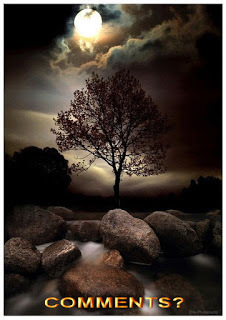
Clancy's comment: Great to see. Mind you, over the years I have made heaps of marmalade from orange peels.
I'm ...
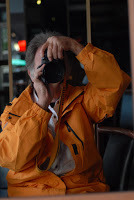
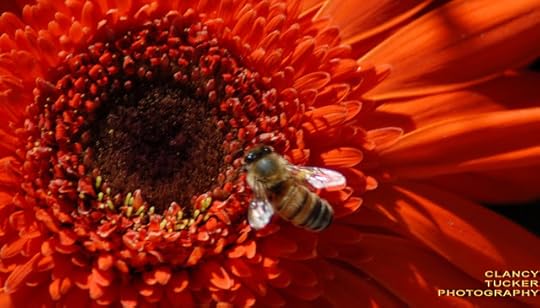
Published on November 16, 2017 12:31
November 15, 2017
16 November 2017 - AMAZING FACTS ABOUT THE AARDVARK

AMAZING FACTS ABOUT THE AARDVARK
G'day folks,
Welcome to some interesting facts about another animal that shares our planet with the rest of us. The aardvark is a medium-sized, burrowing, nocturnal mammal native to Africa. It is the only living species of the order Tubulidentata, although other prehistoric species and genera of Tubulidentata are known.
Aardvarks look a bit like pigs, with rabbit-like ears and a kangaroo’s tail - yet they are not related to any of these animals. In fact, one of their closest living relatives is the elephant!
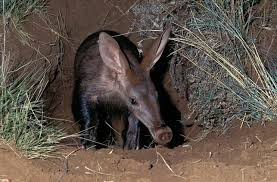
Quick FactsType: MammalDiet: OmnivoreLife span: 23 yearsSize: 43–53 in (length not including the tail)Weight: 117–181 lbHabitat: Mixed including savannas, grasslands, woodlands and bushlandRange: Sub-Saharan AfricaScientific name: Orycteropus afer Amazing Facts About the Aardvark Aardvarks are tough mammals that live throughout Sub-Saharan Africa. They can eat 50,000 ants in a night, and are brilliantly adapted to digging with their spade-shaped feet. Aardvarks are a vital part of the ecosystem as they are prey for many species, and their old burrows provide homes for other animals such as African Wild Dogs.
Where does the name Aardvark come from?
The name Aardvark comes from South Africa’s Afrikaans language and means ‘earth pig’ or ‘ground pig’. Aardvarks are also known as ‘antbears’, ‘anteaters’, ‘Cape anteater’ and ‘earth hogs’.
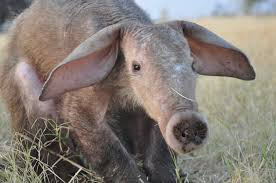
What do Aardvarks look like? Aardvarks are distinctive looking animals with a pig like appearance.They have a stout body with an arched back, long thin head and neck and long tubular ears that are usually held upright, but can be folded down. The hind legs are longer than the front ones, and they have powerful spade shaped feet and claws that are perfect for digging.
Aardvarks are pale yellowish-gray in colour with short fur on the head and tail and long fur on the legs. Their tails are muscular, cone shaped and approximately 28 in (70 cm) in length.
Where do Aardvarks live?
Aardvarks are found in a wide variety of habitats in Sub-Saharan Africa, which is the part of Africa below the Saharan desert. They favour areas with ample supplies of ants and termites such as savannas, grasslands, woodlands and bushland but tend to avoid rocky or swamp areas, as they are less suited to digging.
Aardvarks are nocturnal, sleeping in underground burrows during the day and coming out at night to feed. When breeding, burrows can be extensive networks of over 33 ft (10 m) in length and with multiple entrances. The layout of the burrow can be altered frequently, and it is not unusual for aardvarks to leave borrows and move on to new homes.

What happens to abandoned Aardvark burrows?
Old aardvark burrows are good for the ecosystem as they often inhabited by smaller animals like the African Wild Dog.
What do Aardvarks eat? Aardvarks feed almost exclusively on ants and termites, and are known to eat around 50,000 in one night. They can eat plants and often feed on an African cucumber known as the aardvark cucumber. The relationship between aardvarks and aardvark cucumbers is symbiotic, meaning both species benefit. The aardvark gets a source of food, and the cucumber benefits as the seeds are released into the environment when the aardvark defecates.
After sunset, they leave their cool burrows and forage over many kilometres in grasslands and forests for their favorite food, termites, swinging their long nose from side to side to pick up the termites’ scent.
How are Aardvarks adapted to eating insects in the soil?
As well as their powerful feet and claws that aid in digging, aardvarks have sticky wormlike tongues that can be up to 12 in (30.5 cm) long. Their hair is thick around the nostrils, which acts to filter dirt when eating, and the nostrils can be closed fully to prevent dirt getting in.

Do Aardvarks get bitten by termites?
Aardvarks feed on termites, which do bite them, but aardvarks have tough skin which protects them.
What predators do Aardvarks have? Aardvarks are prey to many animals including lions, leopards, hunting dogs, hyenas, and pythons.
Aardvarks have a keen sense of hearing that enables them to detect approaching predators. If they need to escape, they can dig fast or run in zigzags. If not, they can strike with their claws, tail and shoulders, and have been known to flip onto their backs and lash out with all fours.If attacked in the tunnel, aardvarks can seal the tunnel off behind them or turn around and attack with their claws.
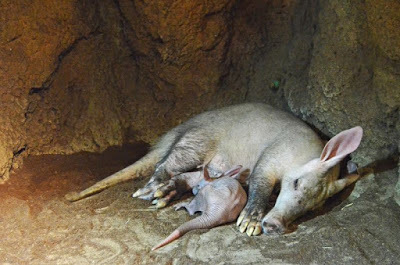
When do Aardvarks give birth to cubs?
Aardvarks are solitary and only come together to mate; females have a gestation period of seven months. One cub is born between May and July and will remain in the burrow for the first two weeks of life. Cubs start eating termites at around nine weeks of age, and start digging burrows at six months, but remain with the mother until the following mating season.
What are the greatest threats to Aardvarks?
Aardvarks are listed as least concern by the IUCN Red List of Threatened Species.
The extent of threats is mostly unknown and no particular conservation measures are in place currently. Potential threats include the bushmeat trade, subsistence hunting and habitat loss due to agriculture.

Clancy's comment: Not exactly the prettiest of creatures, but it's here for a reason I guess.
I'm ...

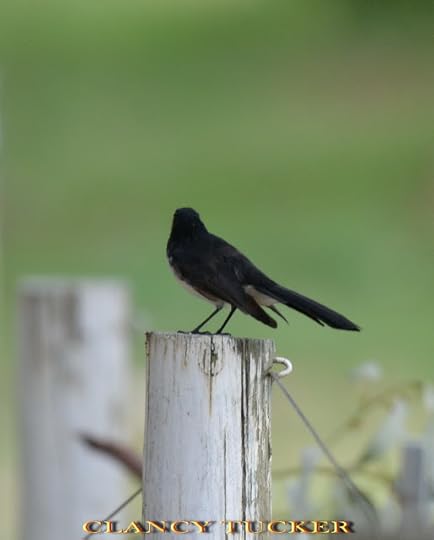
Published on November 15, 2017 12:22
November 14, 2017
15 November 2017 - DEATHLY SECRETS OF PARIS
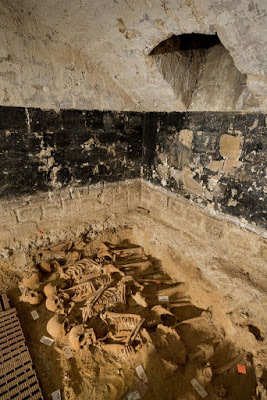
DEATHLY SECRETS OF PARIS
G'day folks,
Welcome to another mysterious find. This time it's in Paris.
U nderneath the product aisles of a well-known Monoprix supermarket branch in central Paris, the skeletons of up to 200 lost souls have been discovered buried in a mass grave.

Luckily for the Monoprix stockboys, the discovery wasn’t made until the supermarket chain decided to expand its levels and dig further into the basement of the building on Boulevard de Sébastopol, where according to public historical records, had been the site of a hospital cemetery between the 12th and 17th century.

Ordinarily, it’s assumed most of Paris’ long-dead were exhumed from the city’s overcrowding cemeteries 200 years ago and transferred to the catacombs, but expert archeologists from the French National Institute for Preventive Archaeological Research (INRAP) were called in as a precaution.

Although the team knew it was a possibility they would find some scattered skeletal remains, they were in no way expecting to find up to 200 bodies neatly laid out in several locations throughout the basement, right under the feet of blissfully unaware Parisians doing their grocery shopping.
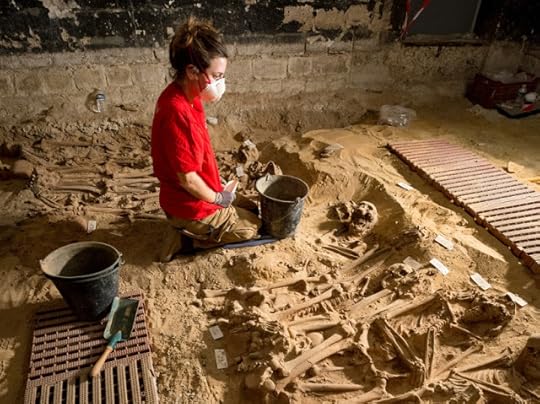
The archeologists believe the people buried here in such a fashion would have likely died from an epidemic, likely the plague, or perhaps famine. DNA tests will be carried out to reveal some answers at which point the bodies will be taken into the care of the state and given a final resting place, perhaps more suitable than say, directly under the supermarket’s frozen food section on aisle 4.
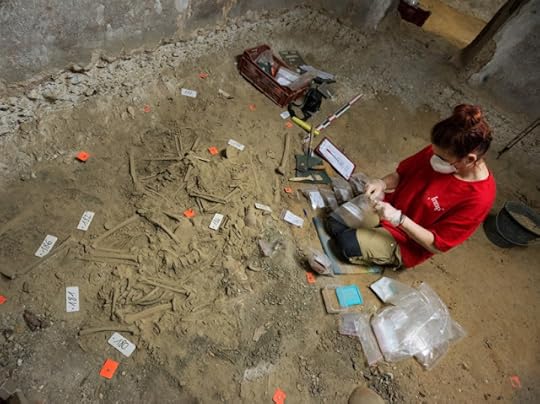


Clancy's comment: Yet another odd find, eh? I wonder what else will be found in years to come.
I'm ...


Published on November 14, 2017 11:53
November 13, 2017
14 November 2017 - FAMOUS LAST WORDS

FAMOUS LAST WORDS
G'day folks,
Time for some more of those famous last words from the rich and famous.
49. Maximilian – Emperor of Mexico
“I forgive everybody. I pray that everybody may also forgive me, and my blood which is about to be shed will bring peace to Mexico. Long live Mexico, Long Live Independence.”
50. Lord George Byron – Writer
‘Now I shall go to sleep. Goodnight.’
51. François Rabelais – Writer
“I owe much; I have nothing; the rest I leave to the poor.”
52. Malcolm X – Black leader
“Let’s cool it brothers…”
53. Franz Leher – Composer
“Now I have finished with all earthly business, and high time too. Yes, yes, my dear child, now comes death.”
54. Johannes Brahms – Composer
“Ah, that tastes nice. Thank you.”
55. Elizabeth I – Queen of England
“All my possessions for a moment of time.”
56. Ethan Allen – American Revolutionary general
“Waiting are they? Waiting are they? Well–let ’em wait.”.
57. Jessica Dubroff – Seven-year-old Pilot
“Do you hear the rain? Do you hear the rain?”
58. Chief Sitting Bull – Activist
“I am not going. Do with me what you like. I am not going. Come on! Come on! Take action! Let’s go!”
59. Richard Feynman – Physicist
“I’d hate to die twice. It’s so boring.”
61. Tallulah Bankhead – Actress
“Codeine . . . bourbon”.
62. Woodrow Wilson – US President
“I am ready”.
63. Louis XVIII – King of France
“A King should die standing”.
64. Anton Pavlovich Chekhov – Writer
“I am dying. I haven’t drunk champagne for a long time.”
65. Edward VII – King of Britain
“No, I shall not give in. I shall go on. I shall work to the end.”

Clancy's comment: And, your last words would be?
I'm ...


Published on November 13, 2017 11:49
November 12, 2017
13 November 2017 - HURRICANE KATRINA
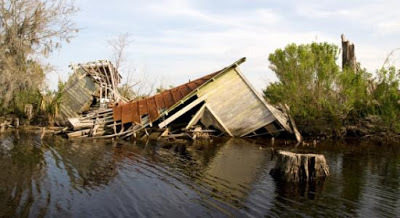
HURRICANE KATRINA
G'day folks,
As I write this, Texas is going through similar problems.
Early in the morning on August 29, 2005, Hurricane Katrina struck the Gulf Coast of the United States. When the storm made landfall, it had a Category 3 rating on the Saffir-Simpson Hurricane Scale–it brought sustained winds of 100–140 miles per hour–and stretched some 400 miles across. The storm itself did a great deal of damage, but its aftermath was catastrophic. Levee breaches led to massive flooding, and many people charged that the federal government was slow to meet the needs of the people affected by the storm. Hundreds of thousands of people in Louisiana, Mississippi and Alabama were displaced from their homes, and experts estimate that Katrina caused more than $100 billion in damage.
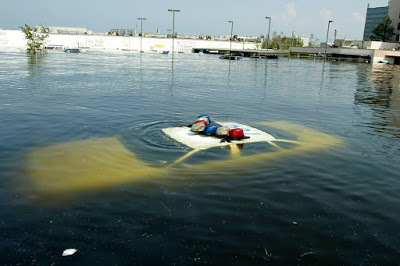
Hurricane Katrina: Before the Storm
The tropical depression that became Hurricane Katrina formed over the Bahamas on August 23, 2005, and meteorologists were soon able to warn people in the Gulf Coast states that a major storm was on its way. By August 28, evacuations were underway across the region. That day, the National Weather Service predicted that after the storm hit, “most of the [Gulf Coast] area will be uninhabitable for weeks…perhaps longer.”

New Orleanswas at particular risk. Though about half the city actually lies above sea level, its average elevation is about six feet below sea level–and it is completely surrounded by water. Over the course of the 20th century, the Army Corps of Engineers had built a system of levees and seawalls to keep the city from flooding.
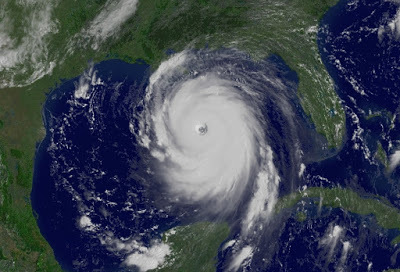
The levees along the Mississippi River were strong and sturdy, but the ones built to hold back Lake Pontchartrain, Lake Borgne and the waterlogged swamps and marshes to the city’s east and west were much less reliable. Before the storm, officials worried that surge could overtop some levees and cause short-term flooding, but no one predicted levees might collapse below design height. Neighborhoods that sat below sea level, many of which housed the city’s poorest and most vulnerable people, were at great risk of flooding.
The day before Katrina hit, New Orleans Mayor Ray Nagin issued the city’s first-ever mandatory evacuation order. He also declared that the Superdome, a stadium located on relatively high ground near downtown, would serve as a “shelter of last resort” for people who could not leave the city. (For example, some 112,000 of New Orleans’ nearly 500,000 people did not have access to a car.) By nightfall, almost 80 percent of the city’s population had evacuated. Some 10,000 had sought shelter in the Superdome, while tens of thousands of others chose to wait out the storm at home.
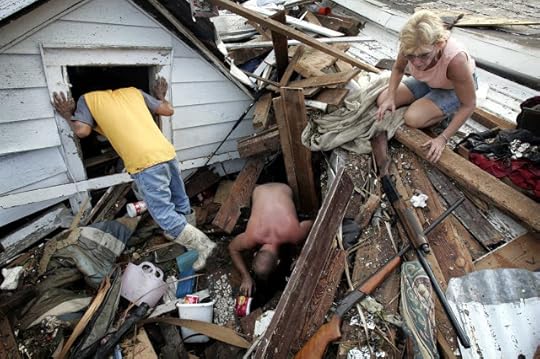
Hurricane Katrina: Storm and Flooding
By the time Hurricane Katrina struck New Orleans early in the morning on Monday, August 29, it had already been raining heavily for hours. When the storm surge (as high as 9 meters in some places) arrived, it overwhelmed many of the city’s unstable levees and drainage canals. Water seeped through the soil underneath some levees and swept others away altogether. By 9 a.m., low-lying places like St. Bernard Parish and the Ninth Ward were under so much water that people had to scramble to attics and rooftops for safety. Eventually, nearly 80 percent of the city was under some quantity of water.

Hurricane Katrina: The Aftermath
Many people acted heroically in the aftermath of Hurricane Katrina. The Coast Guard, for instance, rescued some 34,000 people in New Orleans alone, and many ordinary citizens commandeered boats, offered food and shelter, and did whatever else they could to help their neighbors. Yet the government–particularly the federal government–seemed unprepared for the disaster. The Federal Emergency Management Agency (FEMA) took days to establish operations in New Orleans, and even then did not seem to have a sound plan of action. Officials, even including President George W. Bush, seemed unaware of just how bad things were in New Orleans and elsewhere: how many people were stranded or missing; how many homes and businesses had been damaged; how much food, water and aid was needed. Katrina had left in her wake what one reporter called a “total disaster zone” where people were “getting absolutely desperate.”

(For one thing, many had nowhere to go. At the Superdome in New Orleans, where supplies had been limited to begin with, officials accepted 15,000 more refugees from the storm on Monday before locking the doors. City leaders had no real plan for anyone else. Tens of thousands of people desperate for food, water and shelter broke into the Ernest N. Morial Convention Center complex, but they found nothing there but chaos. Meanwhile, it was nearly impossible to leave New Orleans: Poor people especially, without cars or anyplace else to go, were stuck. For instance, some people tried to walk over the Crescent City Connector bridge to the nearby suburb of Gretna, but police officers with shotguns forced them to turn back.)
Katrina pummeled huge parts of Louisiana, Mississippi and Alabama, but the desperation was most concentrated in New Orleans. Before the storm, the city’s population was mostly black (about 67 percent); moreover, nearly 30 percent of its people lived in poverty. Katrina exacerbated these conditions, and left many of New Orleans’s poorest citizens even more vulnerable than they had been before the storm.
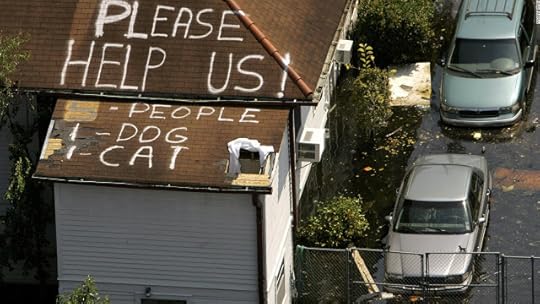
In all, Hurricane Katrina killed nearly 2,000 people and affected some 90,000 square miles of the United States. Hundreds of thousands of evacuees scattered far and wide. Today, after years of recovery and rebuilding efforts, people along the Gulf Coast have made great strides in returning to life as usual even as they continue to rebuild.

Clancy's comment: Mm ... Not good. Australia also has massive floods.
I'm ...


Published on November 12, 2017 11:38
November 11, 2017
12 November 2017 - THE ANIMAL ARK
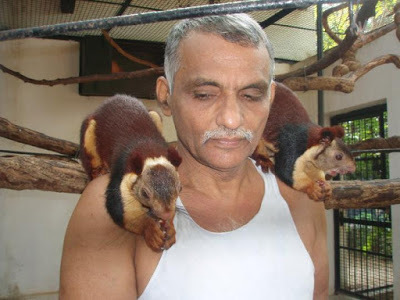
THE ANIMAL ARK
G'day folks,
The Animal Ark is a special wild animal sanctuary, in Maharashtra, India, that takes in orphaned animals whose parents get hunted by villagers for food. It was set up by a local doctor who understood the necessity of hunting, but couldn’t allow the young animals starve to death.

One day, during the early 70s, Dr. Prakash Amte and his wife were taking a walk in the Dandarayana forest of Gadchiroli, when they encountered a group of tribal people carrying a dead monkey that they had hunted. They noticed that there was a baby monkey clinging to its dead mother’s body and trying to suckle her breast. It was heartbreaking sight, and Dr. Prakash decided he couldn’t let the hunters kill the baby as well. He asked them what they intended to do with it, and they said they were going to eat it, just like its mother. He knew the tribe killed out of necessity, not for sport, so he offered them rice and clothing in exchange for the baby monkey. They reluctantly accepted, and the small animal became the first member of their big animal family.

Prakash Amte named the small red-faced monkey Babli, after the tribal god worshiped by the Madia peoples, and raised it in the safety of his home, in the village of Hemalkasa. Babli seemed to love it there, and soon became friends with the household dog. She would cling to its back and play with it, not knowing that it was the very animal that the Madias commonly used to hunt its kind. But seeing the monkey and his dog so happy together, gave the doctor an idea.

Amte knew that the local tribes relied on hunting wild animals to survive. It was one of their only sources of sustenance, but he decided to make a deal with them that could save the lives of orphaned animals. He convinced the Madia tribes that also killing the young offspring of the animals they hunted wasn’t worth it, because they didn’t put much food on their tables. Instead, he asked them to bring the orphans to him, in exchange for grains, clothing and medical supplies. They agreed, and the doctor’s home soon became the Animal Ark sanctuary.

Over the last four decades, Animal Ark has been a refuge for a variety of wild animals, from giant squirrels and palm chivets, to macaques and sleuths, and even dangerous species that most people wouldn’t dare touch, let alone live with in their home. Jackals, leopards, Indian pythons and crocodiles, all were welcome in Dr. Prakash’s home.
At one point, the Animal Ark sanctuary hosted 300 wild animals, from various species, all uncaged and living in close contact with humans. This made some of the locals nervous, and after several complaints to the local government about the breeding of wild animals in the village, Prakash was forced to either build cages for them or risk having his sanctuary shut down. He built the enclosure required by regulations, but the place still feels more like an “asylum for animals” then a zoo.

Dr. Prakash’s son, Aniket Amte, grew up surrounded by all sorts of animals, and recently told The Better India that he preferred things the way they were before the cages. “I remember how we, the children of the village, and the animals would walk together to the river for a bath,” he recalled. “We grew up with no fear of animals.”
Today, Animal Ark is home to around 90 animals, and that number is estimated to go down in the next few years, because the Madia tribes hunt less than they used to. But everyone who knows the Amte family, or has heard their story, know that they have helped save hundreds if not thousands of orphaned animals since the 1970s. They also know of their struggles to keep Animal Ark open over the last four decades.

Clancy's comment: A good story, eh?
I'm ...


Published on November 11, 2017 12:46
November 10, 2017
11 November 2017 - ASTONISHING SELF-TAUGHT ARTIST

ASTONISHING SELF-TAUGHT ARTIST
G'day folks,
Once again, I present another outstanding young artist. Jono Dry is only 28-years-old and has never taken art classes, but his incredible talent allows him to create these photographic quality drawings using only graphite pencils.

The young South African artist is considered one of the few people in the world able to take drawing pat the limits of what is considered achievable with simple graphite pencils.

Jono spends most of his time working on his large-scale drawings, and usually takes about 2-3 months to complete a piece, but he once spent a whopping 5 months painstakingly drawing one of his most complicated artworks. Considering how incredible the result of his labor ends up looking and the fact that he only produces between 4 and 8 large-scale drawings per year, Jono Dry’s hand-drawn masterpieces are considered very exclusive among collectors.

The talented artist draws inspiration from everything around him, and specializes inn hyperrealism and surrealism, sometimes combining the two into artworks that mimic his ability to push the limits of what is real and possible. I don’t even know what’s more impressive about Jono’s work, his incredible technique or the concepts he comes up with for his compositions.
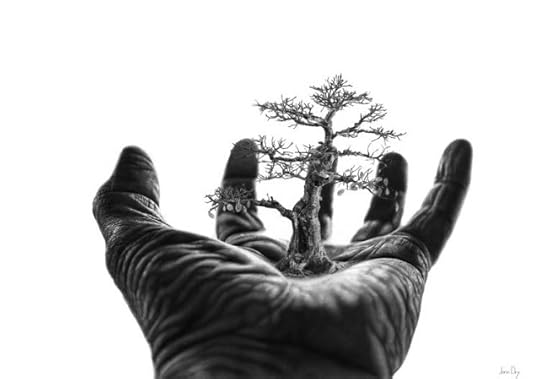
“I enjoy the idea of having no limit with my work. When the only limit is your imagination, it becomes a wonderful challenge to see how far it can stretch,” Dry told ArtBookGuy. “It feels like I’m constantly exploring and pushing the boundaries of my own imagination with the goal to find something worth spending time, bringing to life in the form of a drawing.”






Clancy's comment: Massive amount of talent, eh?
I'm ...

Today is Remembrance Day...
LEST WE FORGET!
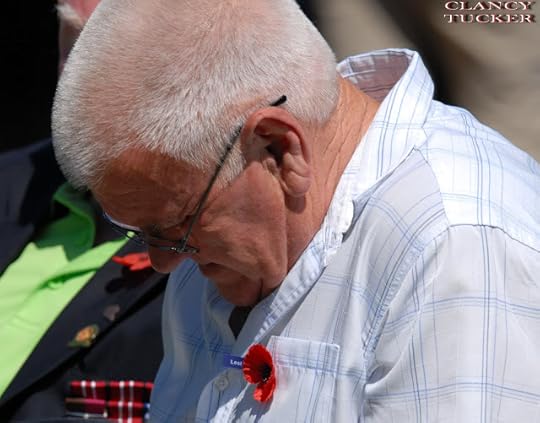
Published on November 10, 2017 12:04
November 9, 2017
10 November 2017 - GREAT QUOTES TO READ

GREAT QUOTESTO READ
G'day folks,
Welcome to some quotes to inspire you for the day.
















Clancy's comment: Mm ... Some worthwhile ones here today.
I'm ...


Published on November 09, 2017 12:59
November 8, 2017
9 November 2017 - 1920’S SPEAKEASY CLUB WITH A TREEHOUSE
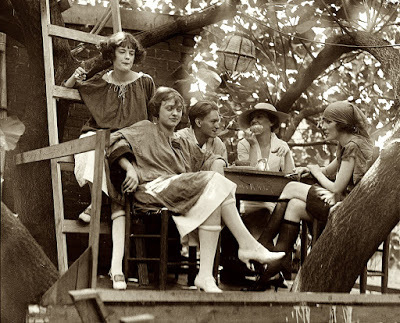
1920’S SPEAKEASY CLUB WITH A TREEHOUSE
G'day folks,
W e’ve stumbled upon the backyard of a speakeasy club called the Krazy Kat Club in Washington DC, July 15, 1921. It looks like they might have decided to move their staff meeting outside to their treehouse in the heavy heat of July– and nobody is in the mood for business.
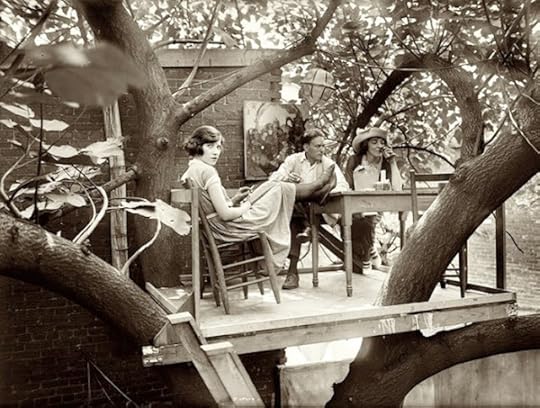
Every workplace should have a backyard treehouse really.

The club was run by Cleon “Throck” Throckmorton, seen sitting on the terrace of the treehouse wearing black stockings and standing outside the entrance below.

Despite prohibition, the club still served liquor to its customers, and was raided many times from 1918 to about 1925. One of the raids in 1919 happened after a police officer walking nearby heard a gunshot from the club after midnight.

Twenty-five people were arrested, including three women — artists, poets and actors, and even some people who worked for the government by day and played with the bohemians by night.

Clancy's comment: Wow. How civilized is that, eh?
I'm ...


Published on November 08, 2017 11:38



